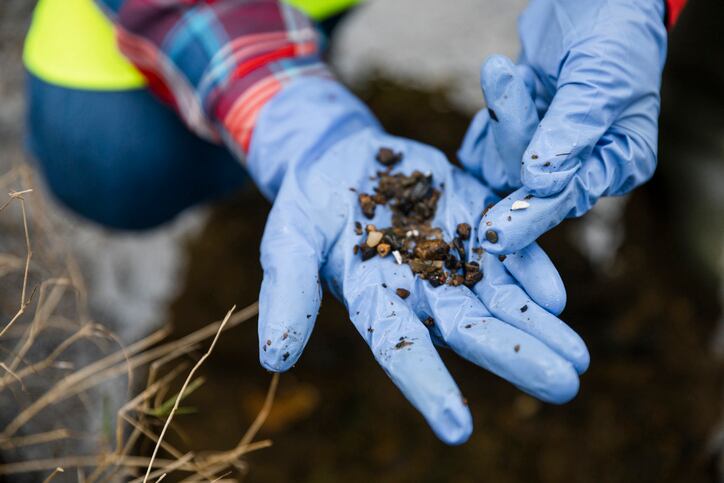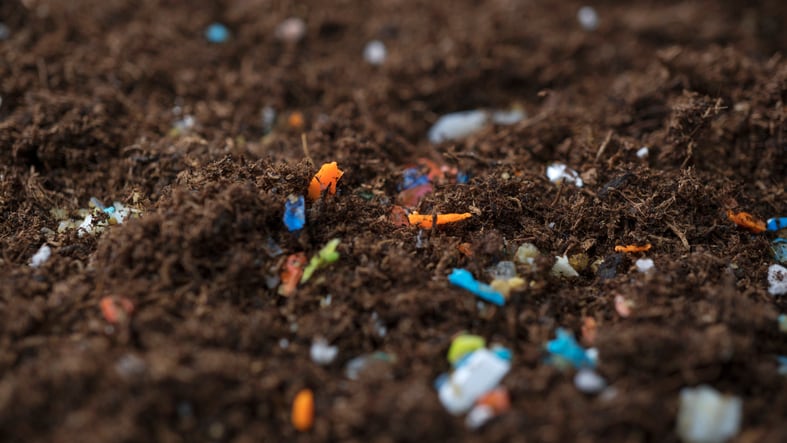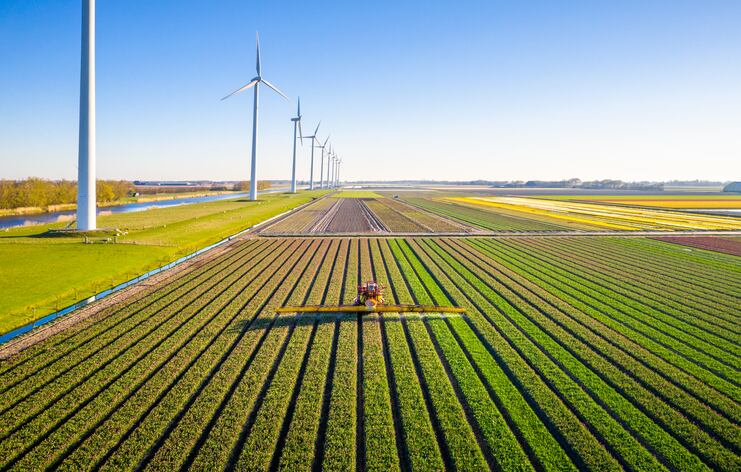According to a 2022 report, the use of plastic-coated agrochemical products provided by major agribusiness companies like BASF, Bayer and Syngenta is on the rise and compounding the risks of microplastic contamination.
The long-term effects of microplastic accumulation in agricultural soils are still poorly understood and largely unquantified. But there is evidence that microplastics can act as vectors for toxic chemicals, pathogens, and harmful additives, posing risks to soil health, crops, and potentially human health through the food chain.
Innovations do exist that might to address the problem of microplastics getting into soil. For example, there’s growing awareness of bioremediation techniques that use microorganisms to naturally draw out toxins such as microplastics from soils.
China’s 2019 Soil Pollution Prevention and Control Law, for example, gives priority to bioremediation measures that can prevent contaminants from entering food crops.
There’s also been developments of filtration systems that can be applied to agricultural runoff or irrigation systems to capture microplastics before they enter the soil which could reduce a number of these impacts at the source.
But is the problem outpacing the potential solutions? For example, a new study starting this month at the University of Portsmouth in the UK will investigate how climate change will affect the microplastics in our environment.
The three-year PhD project seeks to determine whether future environmental conditions – such as higher UV radiation levels, increased temperatures and acidity in the oceans – will cause plastics to shed more microplastics than they do now.
The first study to explore secondary microplastics from older plastics
Using projected climate patterns for 50 years’ time from the Intergovernmental Panel on Climate Change, this research is the first of its kind to explore secondary microplastics from older plastics in our future climate scenarios. Until now, studies have concentrated solely on microplastics shedding from brand-new plastics. However, this project will focus on how aged plastics, those that have been in the environment for years, break down under real world conditions.
Professor Fay Couceiro, professor of environmental pollution from the University of Portsmouth, said: “New plastic is strong, but once aged, plastic becomes weaker and breaks up more easily. We expect to see many more microplastics coming off aged plastic rather than new plastic. This is important because it replicates real environmental conditions. Up until now, calculations have been made using new plastic – this method will give us a much more accurate picture of what’s going on. As far as we know this is the first time this has been looked at in conjunction with climate change.”
The project focuses on understanding the secondary pathways through which microplastics enter the environment, such as from storm events, wave action, UV exposure and extreme temperature changes. These environmental stressors, known as weathering and erosion, weaken the structural integrity of plastic over time, causing it to fragment into smaller pieces.
By simulating future climate scenarios, researchers aim to determine how these processes will evolve under increased UV radiation, ocean acidification and more frequent extreme weather events – all of which are expected over the next 50 years.
By using accelerated ageing processes, the researchers will be able to simulate ‘old plastic’. These aged plastics will be tested in two different environments: a UK climate and an Australian one, focusing on five types of common plastics in both current and future climate conditions.
Stephanie Northen, PhD student from the Revolution Plastics Institute at the University of Portsmouth, said: “Our aim is to better understand the fragmentation rates of plastics into microplastic, initially focusing on marine environments. We’ll use a variety of traditional and new bioplastic alternatives and then subject them to different environmental and physical stresses. We can then work out the rate of formation of microplastics and understand more about the impacts of climate change.”
Will this project also seek to understand more about how microplastics are affecting soil properties, plant health and soil biodiversity? The project’s PhD student, Stephanie Northen who is the PhD student on this project, said the research will focus on the marine environment’s responses to climate change and how this impacts the degradation of old and new plastics. However, some of the potential conclusions about the fragmentation of microplastics under different weathering conditions (ie. UV radiation) in this experiment could be applied to terrestrial environments and soils, she said.
Microplastics enter soil through a number of pathways, she explained, such as surface run-off, extreme weather events/storms, fertilisers (particularly sludge-based/biosolids), some mulching practices, use of plastic equipment e.g. pipes that break down over time into secondary microplastics.
Biosolid fertilisers, she added, are becoming an “increasingly concerning issue” with the rise in microplastics presence in sewage sludge.
“Microplastics impose a number of risks as they alter the soil structure reducing water retention, can lead to leachates of harmful chemicals and additives that are in the plastics, disrupts microbial community and activity that can affect the soil fertility,” she explained.
“These poorer soil conditions can negatively impact plast productivity, if root growth is inhibited, or if toxicity in the soil increases. So overall this impacts the habitat quality and can disrupt food webs and biodiversity.
“Microplastics often provide surfaces for biofilm formation, which can change the diversity and function of microbial communities. Also, the release of toxic substances can disrupt microbial metabolic processes and community structures.”
Read more: Microplastics in soils… how big is the problem?
These issues over time threaten to reduce crop yields due to reduced plant productivity, reduced nutrient availability, and could lead to phytotoxicity, the researcher warned. And while is there is limited evidence on whether specific plants more susceptible to microplastic contamination, recent research has indicated that plants with more fragile root systems could be more negatively impacted or crops that grow close to or underground could be more susceptible to toxicity.
What is clear is that current research increasingly suggests microplastics pollution in soils threatens soil health, biodiversity, food security, and potentially human health, making it a pressing environmental issue that requires further research and mitigation strategies.




